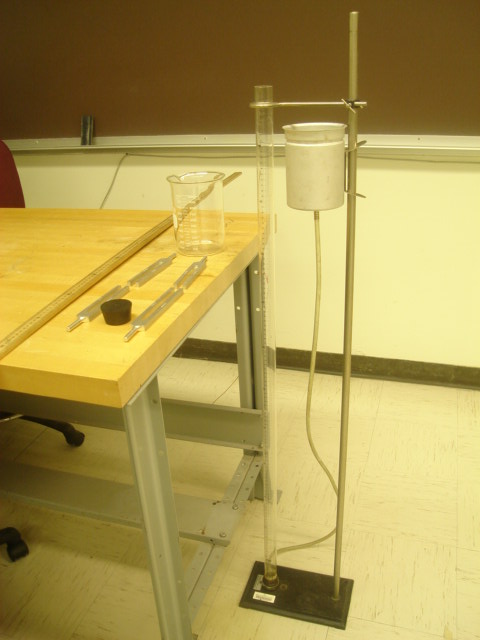
Speed of Sound (resonance, standing waves, wavelength, interferenc
PHY 100 & 103
Students produce standing waves inside a cylinder with one open end by applying sound waves of given frequencies to a glass tube partially filled with water. Varying the height of the water column changes the position of the "closed" end and thus the length of the air-filled portion of the tube. This allows resonance to occur wherever appropriate to the applied tone. A function generator will be used to produce the sound waves at the open top of the tube. Students determine: several effective lengths of the tube at which resonance occurs for each given frequency, the wavelength of the generated function from the effective length of the resonance tube, and the speed of sound from the measured wavelengths and known frequencies. Finally, the speed of sound result is compared with the accepted book value.

Equipment
| Name | Location | Quantity |
| Beaker, 1000ml - Pyrex | JE-105A-S73 | 1 per table |
| Resonance tubes | JE-105A-S157 | 1 per table |
| Ruler, Transparent, Flexible | JE-105A-D90 | 1 per table |
| Meter Stick - 2.00m | JE-105A-(105 Door-L) | 1 per table |
Notes
Connect the microphone to the oscilloscope and the speaker to the function generator. Also connect the microphone to the metal rod on the resonance tube apparatus with a lattice rod clamp so that the microphone is as close to the mouth of the glass tube as possible.
Make sure that the room has plenty of paper.
Along with the initial apparatus set-up, supply a sufficient number of the appropriate paper procedure handouts for all of the lab sections that will use the set-up over the course of the week. Print the PDF, duplicate to double-sided pages, staple, and leave pile on instructor's table prior to first use of set-up.
« Back to Experiment List
Item modified on 2020-03-10 11:28:20 by romank11.
